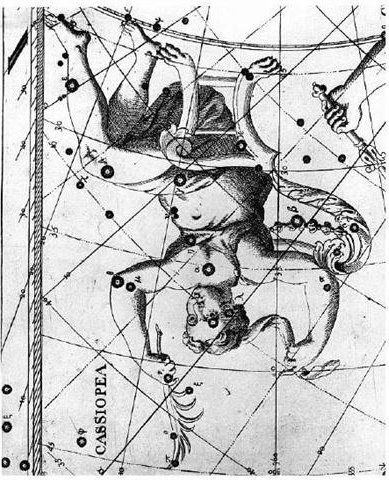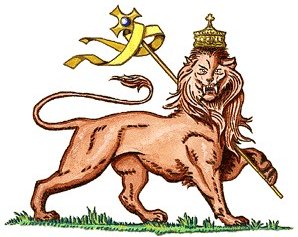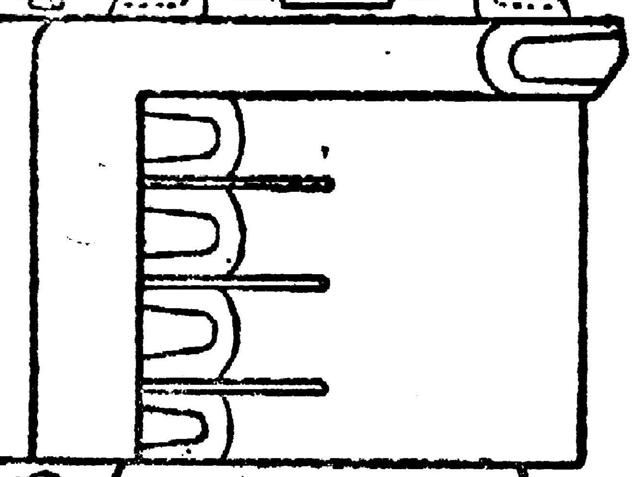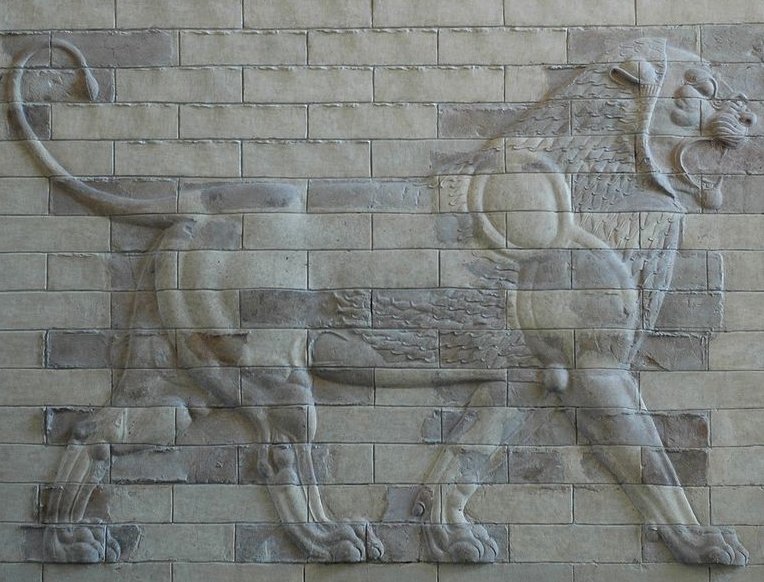2. In Flamsteed's version of Cassiopeia he has put the toes of the Queen's right foot at 2h:
120 / 1440 * 365.25 = 30.4 and spring equinox north of the equator is around day number 89 counted from winter solstice. 30.4 + 89 = day number 119.4 (close to 4 * 30 = 120). This could be where she ends her days, the consort of the black Ethiopean King of Kings (the Lion 'Emperor'):
The Queen's feet are pointing forward, and also one of the Lion's paws. Therefore the reversed 2nd paw probably represents the 4th and last quarter. The paws of Flamsteed's Lion Chair have been drawn as if a lion had only 3 toes (although on a real lion's paw we can count 4 toes pointing forward). This is presumably an example of where an ideal number has pushed aside a real number. Furthermore, I can see only 3 toes on the feet of the Queen, and therefore each of her toes could represent a month. Half are her toes and the other half are the toes of the Lion, 12 in all. In Egypt everything was 'upside down', with the River of Time - the Nile - running down from the mountains in the south to the marshes in the north. Therefore it could be mythically true to put the Queen before the King. It is not the female consort but the Lion King himself who comes behind, and it is evidently one of his paws which represents the 4th and last quarter. The 2 clenched fists in Flamsteed's picture are perhaps drawn to resemble the paws of a lion. 2 fists + 4 feet = 6. The 7th is at the end of the arm rest, while the 8th is of another kind, looking like a swirl of water (the back of her chair). In the rongorongo 'vocabulary' fingers are usually also 3 in number, and likewise toes:
I guess the idea was to represent the digits - to count with - of the Lion (the Sun King). Also the King depicted on the Gateway of the Sun has only 3 fingers (+ thumb which is of another kind):
But Pachamama's hands are instead drawn with 4 + 1 = 5 digits, because she represents Mother Earth: When something is drawn upside down we should try to read it as a sign of the opposite of the normal meaning. The normal reading of vae is probably to go away (leave) and referring to Sun. In Flamsteed's picture we should therefore read the upside down legs as a sign of 'to come' (arrive). The heliacal rising of Cassiopeia is where spring arrives north of the equator, i.e. she brings Sun. Now we can understand why the Lady is pictured upside down. The back side of the year (and the back side of the Queen's chair) corresponds to the side of 'water'. There is no reason to picture the paws of a Lion here, there is no 'land' to walk on. "The classic Babylonian lion motif, found as a statue, carved or painted on walls, is often referred to as the striding lion of Babylon." (Wikipedia)
Instead, in the season of 'water', another type of limb should be used for locomotion and we can imagine it as a 'flipper':
|







